The battle against COVID-19 is the battle of the entire human society. We have already wasted enough time understanding the meaning of “disruption in schooling” and how it matters to children and society. Building up resilience to address contextual issues is the need of the hour. Else, the schools may experience the abandoned look of winter just like the garden of “Selfish Giant”, even in the next spring!
Disruption in Schooling … Is that New?
No ringing of school bells, no assembly on the school ground, no sound of children playing in the school premises, no humming of rhymes and poems – school premises look like lonely deserted places. A pandemic has changed our life in many ways since March 2020. Now we all know what an untimely long-term closure of numerous schools means, what a disruption of schooling of the majority of children may look like, what uncertainties are associated with children’s schooling, and how under-prepared are our schools to cope up with the situation. Each academic year, numerous children suffer disruption in schooling somewhere in India for a few days to a few weeks to a few months. However, we have ignored this disruption because many of us did not have an idea of what it means, how it matters, what it may look like for children. In the past, there have been many instances when such an important issue of disruption in schooling has been highlighted by many, including me. Today, while looking at schools around me, I feel like a defeated and helpless person occupying a space in academia.
This write-up is another effort to highlight the same fact. Again, I would like to state: Disruption in schooling happens every year, we must pay attention to that and take sustainable measures, considering our children as most precious resources of our society. If we do not pay attention now, when the spring comes, schools may still experience the abandoned look of winter just like the garden of “Selfish Giant”!
Also Read: Technological Transformation in Higher Education: Myths and Realities
An Effort in Vain
I wrote a piece in 2014 “Time to Anticipate Natural Disasters” which was published in a magazine. There I mentioned the trauma experienced by children and the disastrous impact of heavy rains, flooding, earthquakes, and other natural & man-made disasters (terrorism, war, law & order breakdown) which are often under-reported in the media. I also argued that this is no excuse for not preparing in advance to cope with post-disaster consequences even if such events are unavoidable (Paik, 2014).
Each academic year, numerous children suffer disruption in schooling somewhere in India for a few days to a few weeks to a few months. However, we have ignored this disruption because many of us did not have an idea of what it means, how it matters, what it may look like for children.
In 2017, I highlighted similar issues and challenges associated with the ignorance towards children’s disruption in schooling. These are the lines quoted from my own article: “In locations suffering from natural disasters or armed conflicts, disruptions in schooling are usual, but disruption remains unnoticed partially due to frequency of such incidents. As a result, the impact on the children’s mental health and learning process, in the long run, remains unaddressed. Do these children, regularly suffering from the disruption of schooling, ever experience ‘equity’ in education?” A chapter written by me, published in a book in 2018 highlighted the fact that “children affected by natural disasters are not able to cope up with the academics leading to exclusion from the school system. Unfortunately, in India, so far, the schools located in natural disaster-prone areas are not mapped properly. As children suffer, the challenges faced by them are never addressed by the current education system and its policies” (Paik, 2018).
Also Read: Is Online Learning Deleterious for Kids?
Long Impact of Untimely School Closure
The schools in India are shut down since March 2020. By mid of April 2020, almost 1.58 billion children and youth, from pre-primary to higher education, in 200 countries across the globe were affected by the pandemic in various ways (UN, 2020). School closure is a wise decision. The cities which closed their schools earlier and for a longer period blunted the effects of the Spanish Flu pandemic in 1918 (Maher, 2020). However, long-term school closure has its own set of challenges. The Ministry of Home Affairs (MHA), Government of India, invoked the Disaster Management Act (DM Act) of 2005 as the overarching legal tool along with the Epidemic Act of 1897. Accordingly, India has declared the pandemic a ‘notified disaster’ (Ghosh and Ray, 2020).
Any catastrophic incident disrupting the regular rhythm of life harms children disproportionately by causing damage to children’s physical health and/or mental health, and by interrupting children’s education in many ways. Sometimes children are pushed into the labour force to help their families, and the micro-level effects on educational attainment are common (Kousky, 2016; Onigbinde, 2018). The UN has highlighted that the closure of the educational institutions, especially the schools, will “hamper the provision of essential services to children and communities, including access to nutritious food, affect the ability of many parents to work and increase risks of violence against women and girls” (UN, 2020). Child marriage, child trafficking, child abuse, children’s addiction to substances could be some of the side effects. The likelihood of dropout significantly increases during transitions from primary to secondary school. Therefore, even after the schools reopen, a drastic dropout from schools is expected. In a nutshell, numerous children are extremely vulnerable now.
Even after the schools reopen, a drastic dropout from schools is expected. In a nutshell, numerous children are extremely vulnerable now. An already existing inequity is taking a worse and extremely ugly shape.
The existing poor status of learning in many countries will be aggravated by this pandemic. Before the outbreak, a learning crisis among children was identified; around 53 percent of children in low and middle-income countries were found to be living in “Learning Poverty” as stated by the World Bank, these children were found not able to read and understand a simple text by age 10 (World Bank, 2020). While most of the schools across India are closed without any academic activity in its true sense, there are very limited schools, mainly confined in urban settings, providing online classes, and learning materials, and a few lucky ones can attend such classes. Can we imagine how these children would be treated by the other set of children getting extremely left out at present? Thus, an already existing inequity is taking a worse and extremely ugly shape.
Also Read: Work-life balance of teachers in digital learning environment
First wave of pandemic started in around March 2020 when India first experienced the closure of all schools followed by a lockdown period. An entire academic year has been over since March 2020. During this time of little more than a year, a few isolated initiatives were taken in a few states by the State Education Departments to reopen the government schools run by the local bodies and/or state education departments or at least to conduct some classes in the localities. However, isolated initiatives remained as ad-hoc plans or projects and couldn’t continue to keep a large-scale visible impact on the children in a sustainable manner.
A second wave of the pandemic began with a huge impact on the youngsters while vaccination started in phases starting with frontline health workers in January 2021, followed by vaccination for senior citizens and people aged above 45 years. Very recently the vaccination drive has been announced for the citizens of the 18-44 age group. However, the vaccine availability remains uncertain, and we already have seen how it is impacting the younger generation currently. As of now, the population below 18 are still out of our vaccination drive as the trial run is just going on for children of specific age groups. In such a situation, re-opening of schools remains uncertain and as a result, many children, having no or limited access to learning resources, no parental support, facing financial crisis due to job loss or salary reduction of their parents will struggle later to cope up with the learning pace in the schools. This will definitely happen if we continue the education process as per the already set standards, norms and regulations.
Also Read: Ensuring Education to Poor in Post-Pandemic Era
As of now, the population below 18 are still out of our vaccination drive as the trial run is just going on for children of specific age groups. In such a situation, the re-opening of schools remains uncertain.
Long Term “Generational Catastrophe”
A statement by the UN looks like an alarm for India! It says, “Preventing a learning crisis from becoming a generational catastrophe requires urgent action from all” (UN, 2020). Majority of the Indian population is rural and around 85% of schools are in rural areas. A report shows that 47.5% of students attend private schools, out of which only around 35% are in private unaided schools located both in urban and rural areas; the rest are in private aided schools where schools are privately managed but receive financial support from the government. 27% of rural students and 70% of urban students attend private schools, but the majority of these schools are low-fee private schools, where the monthly fee per child is less than Rs 1000, or even less than Rs 500 (Centre Square Foundation, 2020). According to an estimate of Ministry of Statistics and Programme Implementation (MoSPI) of 2019, 45.5% of students in private schools pay less than Rs 500/- a month as fees, suggesting that most of the sector is “low-fee” or “affordable” (Centre Square Foundation, 2020).
What do these figures indicate? Almost 77.2% of all schools could not provide a virtual learning platform for an academic year and these schools may not be able to provide the same for another academic year (if the pandemic prevails). These schools, which are not able to provide any learning platform for various reasons, include the government-aided schools and government schools run by the State Department of Education, Local Body (such as Panchayat and Municipal Corporation) and various other bodies such as the Social Welfare Department, Tribal Welfare Department, and Navodaya Vidyalaya Samiti. Some of these schools are residential, which have another issue of maintaining social distance given their current arrangement in the residential premises. While maximum children studying in government-run schools currently have either no academic engagement or extremely limited academic engagement in schools, the children studying in low-fee private schools will also not get effective virtual learning on regular basis, because those schools will not be able to afford the investment (in terms of recurring material cost and cost for human resources) involved in it.
Also Read: Don’t Compromise on Quality Education While Formulating Contingency Plans
The figure below indicates the scenario of schooling based on the latest data; one can see who all are possibly getting regular virtual learning opportunity during this pandemic. A similar trend may continue for another academic year given the situation of the second wave of pandemic and an upcoming third wave that may impact the children more as per the current prediction of researchers and medical practitioners.
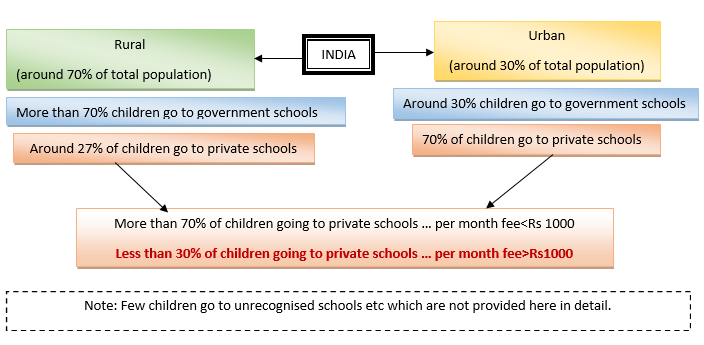
A recent research-based report published by Azim Premji Foundation has mentioned about ‘forgetting/regression’ kind of learning loss. The same report states, “A child who was in class 1 in March 2020 will move into class 3 in 2021 without having engaged with the curriculum of class 2, except through sporadic online or community-based engagements. Thus, the loss of learning during the pandemic comprises the ‘forgetting/regression’ of a proportion of abilities children already knew, including the loss of foundational abilities that make it possible for children to take up further learning, and the absence of curricular learning for an entire academic year” (Azim Premji Foundation, 2021).
Now, we are moving to another academic year 2021-22, where the same set of children, who were in class 1 in March 2020 will move into class 4 in 2022! What can we plan now differently? Can we cover maximum children? If not, what will happen to the rest who might get silently excluded from the education system itself?
Also Read: Educational Supremacy in ‘Vishwaguru’ India: A Long Way to Go
Lessons to be Learnt
Building up resilience to address contextual issues is the need of the hour. Educated parents, active school management committee, committed teacher leaders and collegial school system, school culture with teacher autonomy are few important factors ensuring resilience.
There is a proverb that says, “It is of little use to dig a well after the house has caught fire”. We had almost a year’s time at least in between the first and second wave to prepare ourselves for a mass impact of the pandemic and associated issues with the children, their disrupted schooling, and psycho-social impacts caused by the pandemic. At this point of time, there are multiple challenges that India is facing which must be considered before taking any major decision about school re-opening and re-integrating children to schooling process:
- Inadequate health infrastructure causing huge loss of human capital;
- Inadequate and improper planning and implementation of vaccination of people across all ages;
- Existing trends of rising deaths among the people from younger generation who are not getting vaccinated as promised;
- The untimely death of people from younger generation is resulting into the increase in number of orphan children and children having single parents;
- The second wave of pandemic has already started impacting several children and adolescents and a third wave of the pandemic is already projected to hit India that may affect children in large numbers.
Towards the end of 2020, a few state governments took initiatives to start interaction of teachers with the children in their own neighbourhoods, thus “mohalla classes” or cluster level classes started in some public places including community centres, panchayat offices, common grounds or open spaces in rural and urban areas. The Karnataka government resumed the “Vidyagama programme” in a revised format with classes scheduled to be held on campuses. Considering the transmission of the infection among both students and teachers during such a process, most state governments had to stop such programmes. Henceforth, such experiences must be considered seriously before taking any decision regarding the reopening of schools without making sure that the majority of the stakeholders associated with the schools are vaccinated before any such interaction. A little spark may kindle a great fire in the school community.
Towards the end of 2020, few state governments took innovative initiatives like the ‘mohalla classes’. Karnataka government resumed the ‘Vidyagama Programme’. However, such isolated initiatives remain as ad-hoc plans.
How and What to Prioritise without Rushing?
- Given our country’s population, exceeding 138 crores, where roughly 55% of the total population belong to the 18 – 65 age group, schools should not start physical operation before ensuring vaccination of all or majority of school-related stakeholders (teachers, students, parents, and school staff). We must be pragmatic to accept the upcoming increase in socio-economic distress of people, increase in the learning gap, increase in the socio-economic inequity in the society, still we need to try our best to build up the resilience of the school community.
- Till the schools physically reopen, the teachers will need to plan for remote engagement with students in small groups, and for that, technology must play a big role. Wherever technology will be a concern due to the affordability of the students, the community and/or civil society organizations will be requested to support it. For that, the teachers need to be adequately oriented. This is the time when School Management Committees (SMCs) and Parent-Teacher Associations (PTAs) can play a big role. There is a pertinent debate around the “effectiveness” of engagement with students on a virtual platform, however, we have probably no option existing right now where face to face interaction with more “efficacy” can be planned for at the cost of pushing children, their parents and teachers into a high risk.
- Before the schools reopen, simple mitigation measures like masking, social distancing, sanitizing facilities, and ventilation within school premises must be ensured and later well maintained. While universal testing may not be necessary after the vaccination, all schools should have protocols for isolating cases, tracing their contacts, and quarantining exposed individuals. More monitoring must be there to maintain these rather than merely the monitoring for academic progress and assessment.
- Bridging the learning gap of two consecutive academic years might not be so easy, therefore declaring one academic year as “zero academic year” and insisting on the parents for retaining some children in one grade lower than the expected grade of 2022 might be a better option so that teachers may get an opportunity to rework on bridging the learning gap of lesser degree. That probably could be supplemented by means of tweaking the academic calendar to some extent such as reducing the long holidays, extending some support classes, and introducing some innovative assessments instead of traditional assessment types. However such choices must not be mandatory, rather must be made optional as per the choice of parents, a discussion with parents is a must for executing such plans.
This pandemic is a wake-up call for us to plan for better planning for our schools and the future of our country. Now is not the time to behave like an ostrich. Let us recognize the problem and let us not rush to resolve all problems immediately. A slow but steady approach will work better, else we will do another mistake and end up, unfortunately, inviting 2-3 more waves of this pandemic!
Also Read: 2020: A Year of Shambolic Education Burdening Learners
References:
- Azim Premji Foundation (2021). Loss of Learning during the Pandemic. Bengaluru: Azim Premji Foundation.
- Centre Square Foundation (2020). State of the Sector Report: Private Schools in India.
- Ghosh Ambar Kumar and Anasua Ray Chaudhury (2020). Pandemic as a ‘Disaster’: Assessing Indian State Response. www.orfonline.org/research/pandemic-as-a-disaster-assessing-indian-state-response/
- Government of India (2018). U-DISE Flash Statistics, 2016-17. Ministry of Human Resource Development.
- Kousky, C. (2016). Impacts of natural disasters on children. The Future of children, vol 26, No. 1. 73-92. Johns Hopkins University Press
- Maher, Jake (2020). Closing Schools Saved Lives During the Spanish Flu. Can It Work for Coronavirus? Education Wek. March 04, 2020.
- Onigbinde, L. (2018). The Impacts of Natural Disasters on Educational Attainment: Cross-Country Evidence from Macro Data.
- Paik, S (2014). Time to anticipate natural disasters. Education World. October 2014. www.educationworld.in
- Paik, S (2017). Educational Policies in Challenging Areas. Learning Curve. August 2017.
- Paik, S. (2018). Impact of natural disasters on schools in India: current scenario in terms of policies and practices. In Disaster Risk Governance in India and Cross Cutting Issues (pp. 295-312). Springer, Singapore.
- United Nations (2020). Policy Brief: Education during COVID-19 and beyond.
- World Bank (2020). COVID-19 Could Lead to Permanent Loss in Learning and Trillions of Dollars in Lost Earnings. Press Release. Worldbank.org
Disclaimer: The views expressed in this article are of the author solely. TheRise.co.in neither endorses nor is responsible for them.
About the author
Dr. Saswati Paik is a Faculty at Azim Premji University, Bengaluru

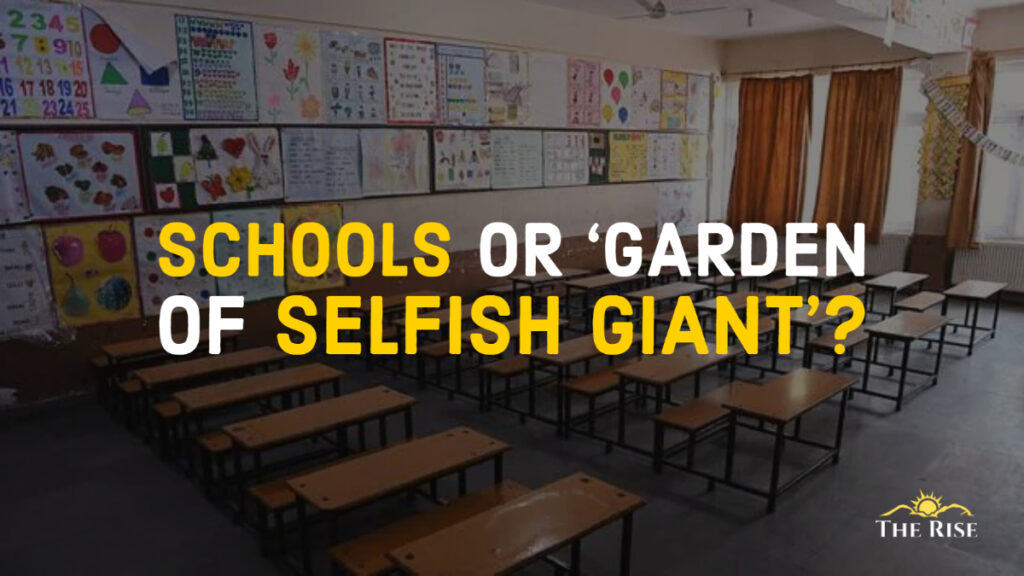

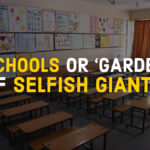
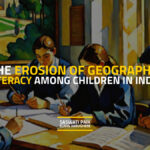



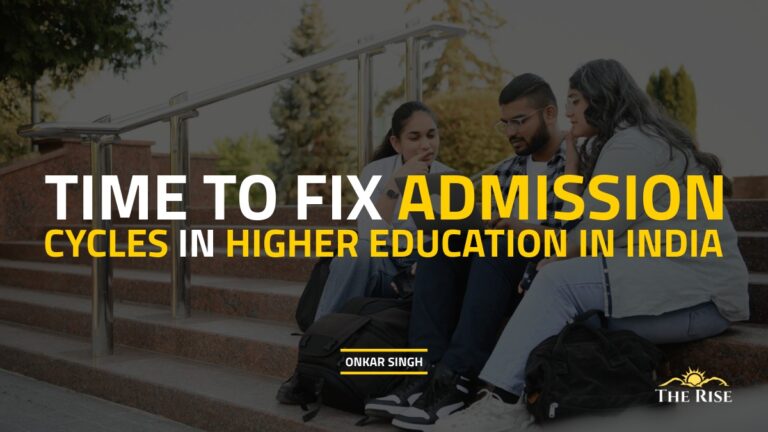
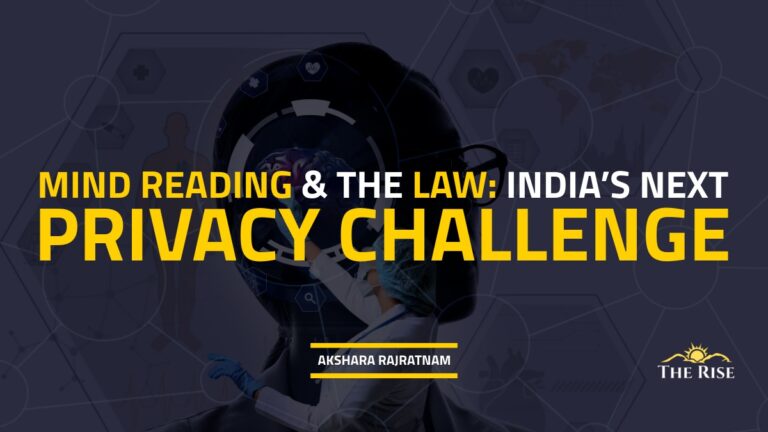
Pingback: Calibrate Education in Corona Aftermath - TheRise.co.in
Pingback: School Dropout of Tribal Children in Chattisgarh: A Study - TheRise.co.in
Pingback: Supreme Court on Access to Education - TheRise.co.in